The Landscaping
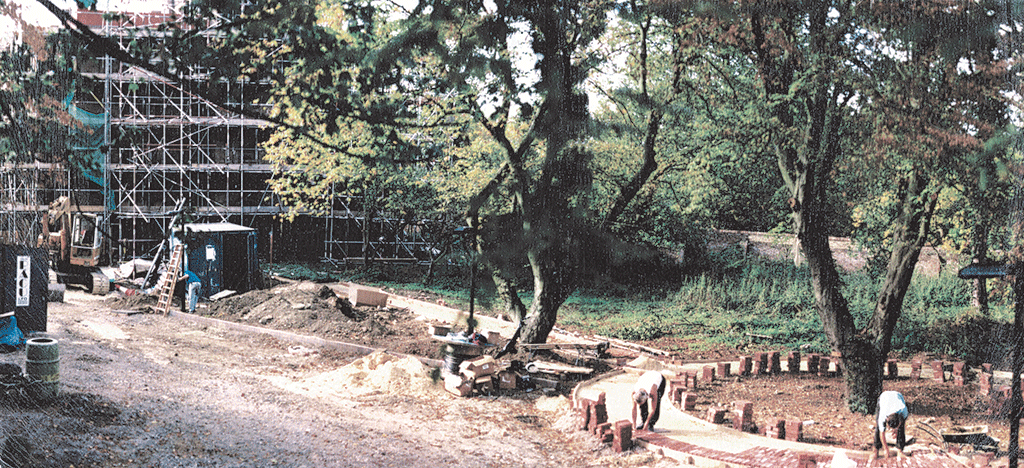
Situated on the southern edge of Richmond Park on the site of a former orchard, Dorich House provided the artist Dora Gordine and her husband, the Hon. Richard Hare with a home, studio, gallery and leafy idyll from 1936 until her death in 1991. On a plot of around two thirds of an acre, the building was purposely oriented to provide a north facing studio and privacy from neighbours and the road. In addition, there was a stipulation that the property needed to be a ‘deer leap’ from the boundary wall of Richmond Park. The ‘deer leap’ or freebord is a strip of Crown-owned land of 5m or 16’ 6” that runs around much of the perimeter of the park and this informed the placing of the house and design of the landscaping, using both to aesthetic advantage.
The Garden in 1936
For Gordine and Hare, the garden’s primary purpose was to provide interesting and seasonally changing views to and from Dorich House, to connect to Richmond Park and to act as a green barrier to the outside world. Trees and dense planting provided privacy – large limes, oaks, hornbeams and sycamores mostly concealed the house from neighbours and passers-by. The garden contained the trees that Dora loved to see and hear and was a place to grow fruit, vegetables and herbs. It was also a social space, where the couple entertained under the orchard trees, played tennis, exercised, and slept outside on the roof in fine weather. Sleeping outdoors, and Gordine’s expectations of her house and garden in general, were very much in tune with avant-garde attitudes to health and fitness across Europe at the time.
The couple do not appear to have imposed major landscaping works on the garden. With the exception of the driveway, which led directly to a small turning bay and a garage on the ground floor of the house, and hard tennis court, laid out in the south east corner of the garden, they seem to have worked with the site and the planting as they found it. Trees, both native varieties and orchard fruit, were an important element. For Gordine, trees were valued for their vital, sensory qualities up close on the ground, as well as for their visual and acoustic appeal from within the house with windows providing carefully framed vistas of a seasonally changing landscape.
The plot was laid mainly to lawn, with trees around the perimeter and dotted throughout the site, creating a woodland garden feel. The small orchard was laid out roughly in two rows on the east side, near the park wall with a smaller orchard to the west of the house. The apple trees all had wide circular borders around them, with daffodils encircling them in the springtime. A deep border was dug parallel to the park wall, with a crazy paved path adjoining it. This path ran approximately along the line of the freebord and would perhaps have connected with paths or stepping stones to the house and drive.
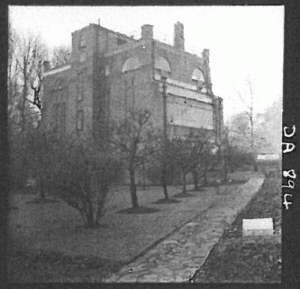
Despite her preference for broadly indigenous trees and domesticated orchard varieties, and a desire to blend her garden with the park landscape beyond the boundary, in a radio interview with the BBC in 1950, Gordine compared the eclecticism of her approach to interior decoration and collecting with gardening: “If you think about it, you rarely decorate your home with only one kind of flower, you want variety. Even in your garden you have many kinds of trees, flowering shrubs, plants – the more skilfully they are combined – the more beautiful is the garden”.
Touch, taste and scent were deliberately cultivated as part of Dorich House’s sensory world and the importance of plants – trees, fruit, vegetables and herbs – to Gordine’s way of life and even her sense of self is documented through personal accounts from friends and neighbours. Friends recalled Gordine as a great natural food and herb enthusiast, cooking with fruit and vegetables grown in her garden; homemade apple cake, gooseberries and herbal infusions of nettles and dandelions to name a few.
The garden in decline
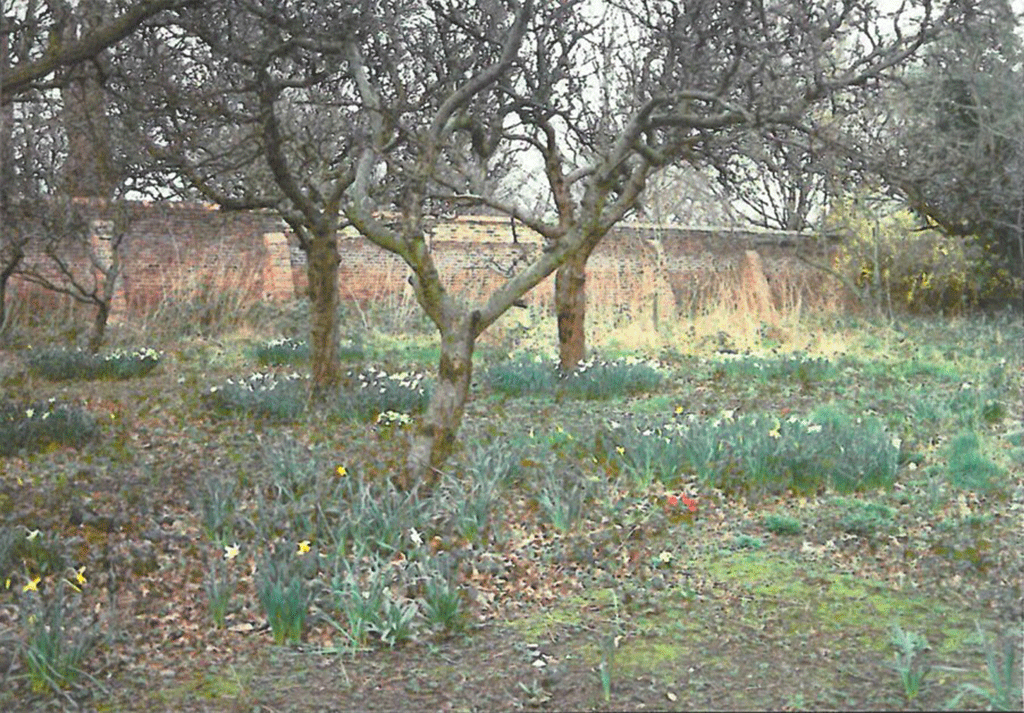
Following the death of Richard Hare in 1966 and Gordine’s declining health, neighbours recalled the neglected state of the house and garden. The windows of the house were filthy and by the 1970’s the grounds had become abandoned looking and overgrown. The garden’s ‘neglected’ appearance was due to lack of tending, but also, in part, to the woodland landscape that Gordine and Hare had sought to preserve and enhance, rather than creating a more traditional ‘well-kept’ garden.
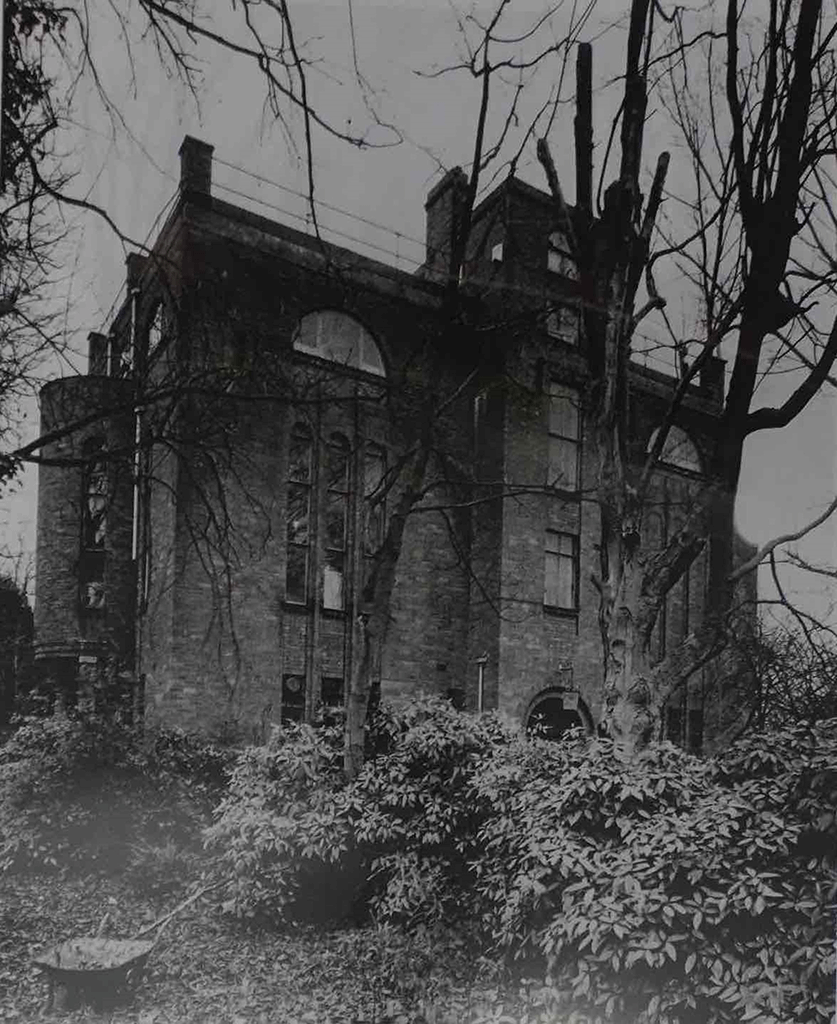
The real neglect of the garden probably set in during the 1980’s, by which time Gordine, then in her eighties, had largely retreated to the top floor apartment of Dorich House.
The 1990’s alterations
In the mid 1990’s, following the acquisition by Kingston University, David Brown and Partners instigated extensive landscaping works to the garden alongside their renovation of the house. Sally Brown explained that the landscaping was a separate but important part of the project, “to make the landscape work for the building and also provide car parking and a proper entrance that could be negotiated”. Initially, a complete assessment and accurate record of all the trees on the site was carried out by David and Sally Brown.
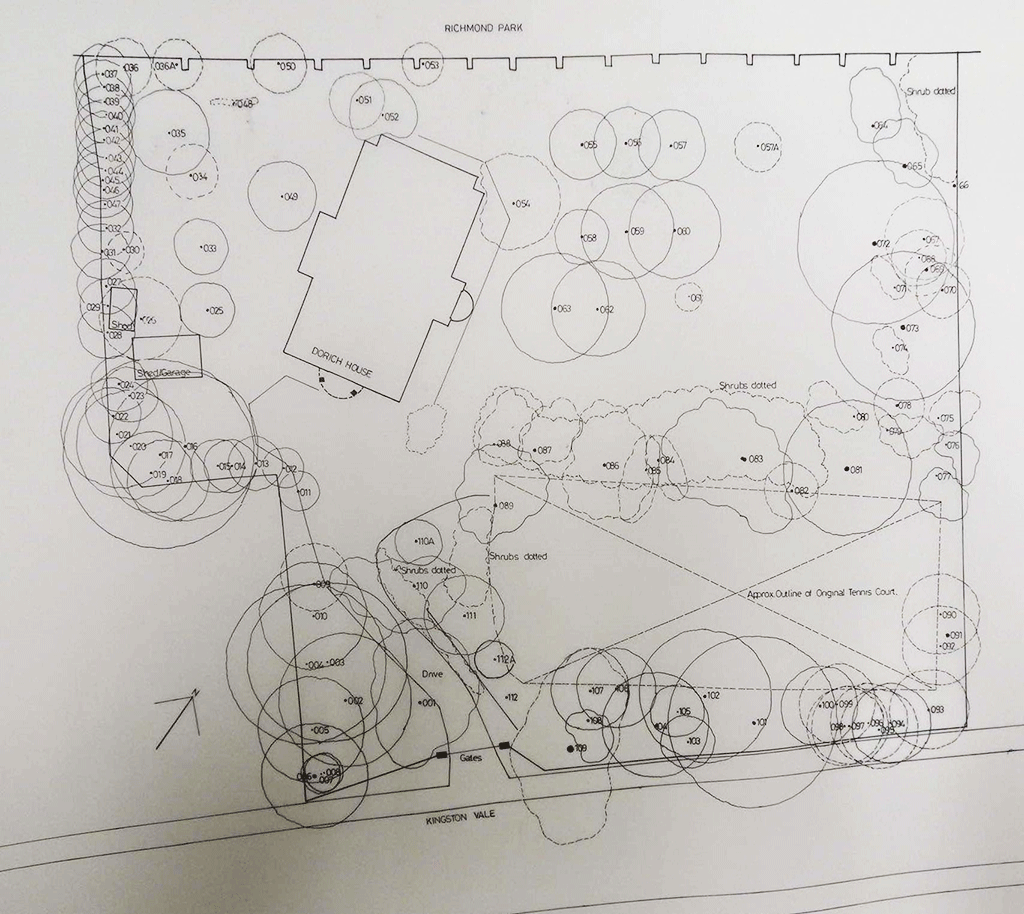
With the assistance of an arboriculturist, this survey identified well over one hundred trees in the garden; almost all the specimens and shrubs surviving at that time were native or domesticated fruit varieties. The arboriculturist surmised that the mulberry and most of the nine apple trees that stood on the lawn to the east of the house were survivors from an old orchard and considered that, together with the ‘remnants of an orchard to the west of the house’, the one on the east lawn was an important part of the site’s character.
Jeremy Schomberg, former gardener at Kingston University, was responsible for the early clearing of the grounds at Dorich House. In a recent oral history interview, Schomberg recalled his first memories of the garden in 1994. “It was quite dishevelled, quite rundown… it was all overgrown and I do recall there being a tennis court…. But primarily it was all of a terrible state”. Despite the jungle-like state of the garden he remembered “there was structure… that it quite obviously was laid out and planned by someone of substance… someone who knew what they were doing. [It] was well thought out” and had “good potential” to be reinstated.
Schomberg recalled a mixture of oak, sweet chestnut, apple and lime trees growing in the garden and, in addition, vegetables. “I remember things like aubergines growing there which is quite strange… aubergines and tomatoes. Maybe a little sort of allotment planting”.
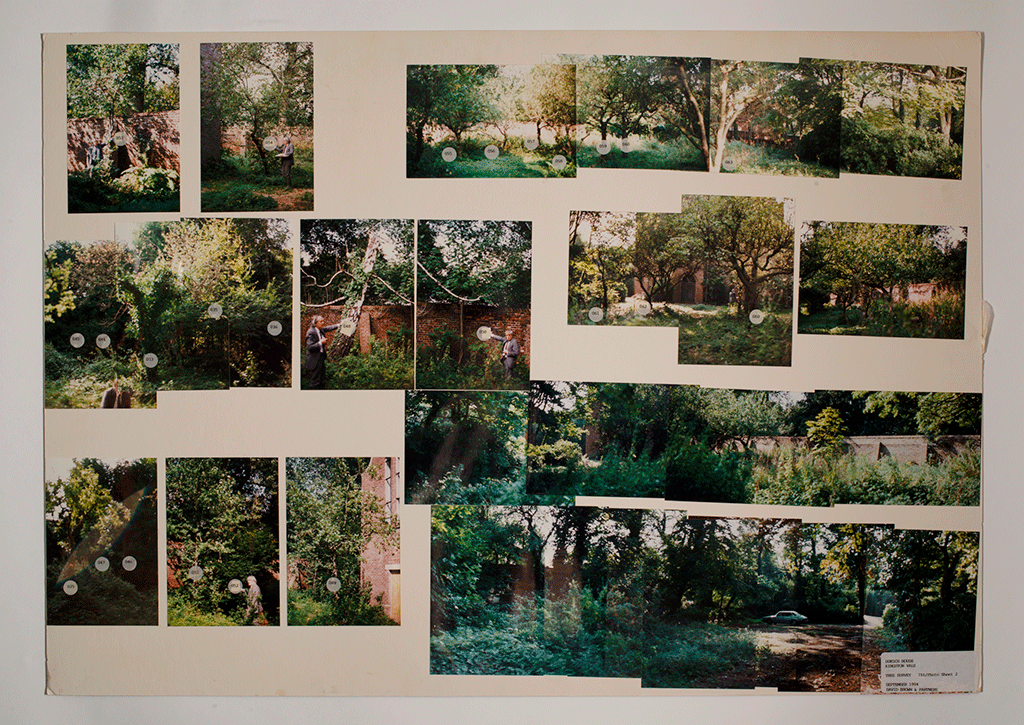
Old and diseased trees were replaced alongside the hard landscaping. Many of the trees, including those along the front perimeter, were covered with ivy and the site was generally overgrown and neglected. Sally Brown recalls the removal of one of the large beech trees by the entrance gates, which “had honey fungus and bracket fungus on it, and had to be cut down, demolished immediately because it was dangerous”. Complications arose while carrying out the new landscaping, such as discovering an enormous drain which passed right through the site, running down the hill, and which required great care during the excavation of the car park.
Despite these challenges and the unkempt nature of the grounds, a scheme was developed to provide better access for pedestrians and vehicles and included a new car park in the location of the old tennis court. From the original entrance, a sweeping new driveway was created which led to the car park and was linked to the service/turning area to the west of the main entrance. The sheds that had stood on this spot, which dated from Gordine’s time, were demolished. A new pedestrian gate was built off Kingston Vale, in the south-east corner of the plot. The present red brick path dates to this time and links the car park and the pedestrian access via a circular loop around a large hornbeam tree and then formally on axis to the building entrance. The new vehicle and pedestrian entrance gate posts were also part of the scheme.
Existing planting was augmented with new hedges and other trees and shrubs to divide the site into four main areas: the inner garden and orchard, which was lawned with spring bulbs; the car park, the ramped entrance, driveway and associated service area; and the smaller western orchard.
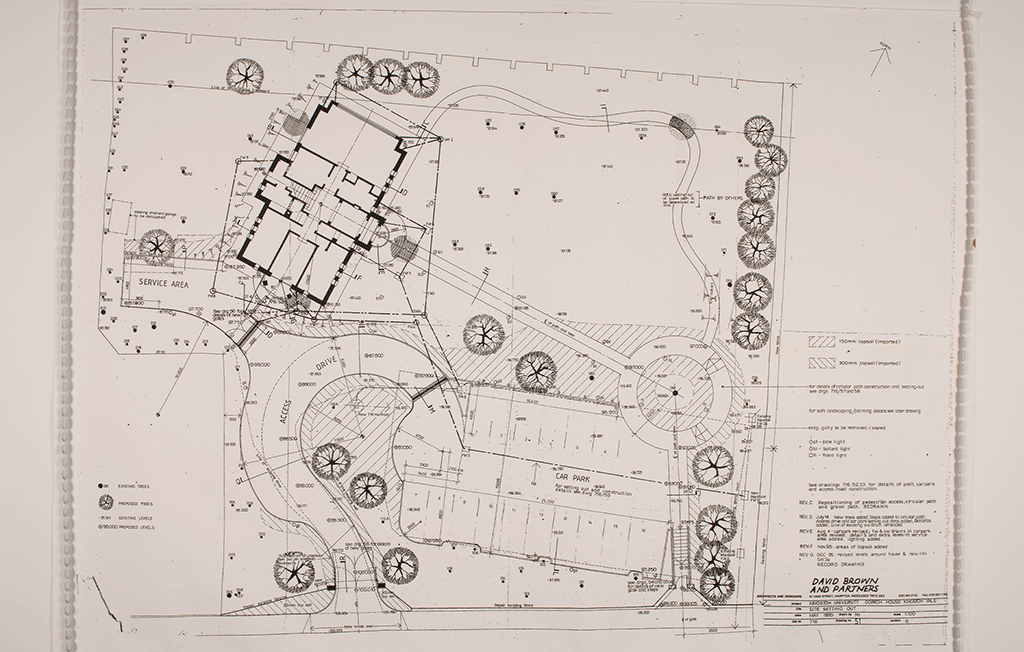
Most of the apple trees that survived in the 1990s have since been replanted. In January 2011 Kingston University’s Biodiversity Action Group planted four new apple and two new pear trees in conjunction with the London Orchard Project, as the existing trees had either died or were over one hundred years old and coming to the ends of their lives. Another was lost to Storm Kate in 2016 and further losses, inevitable in orchard trees of this age, have since been replaced with appropriate heritage varieties.
In 1936, a blend of as found and planned interventions created a subtle and charming garden landscape at one with its leafy setting. Despite falling into disrepair in parallel with Gordine’s failing health, the garden was carefully re-planned during the renovation of Dorich House with practical alterations to make it suitable for public use, transforming into the idyllic setting enjoyed today.
Published as part of the project The Squatter Years: Recovering Dorich House Museum’s Recent Past, funded by the National Lottery Heritage Fund, February 2021.

